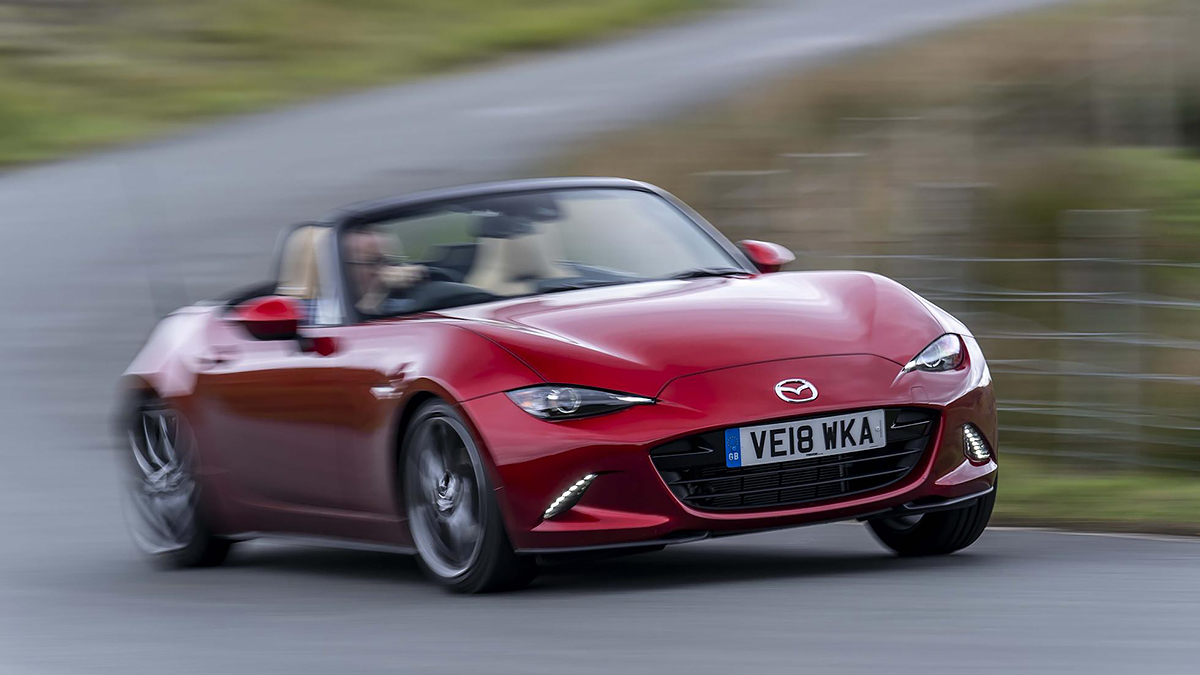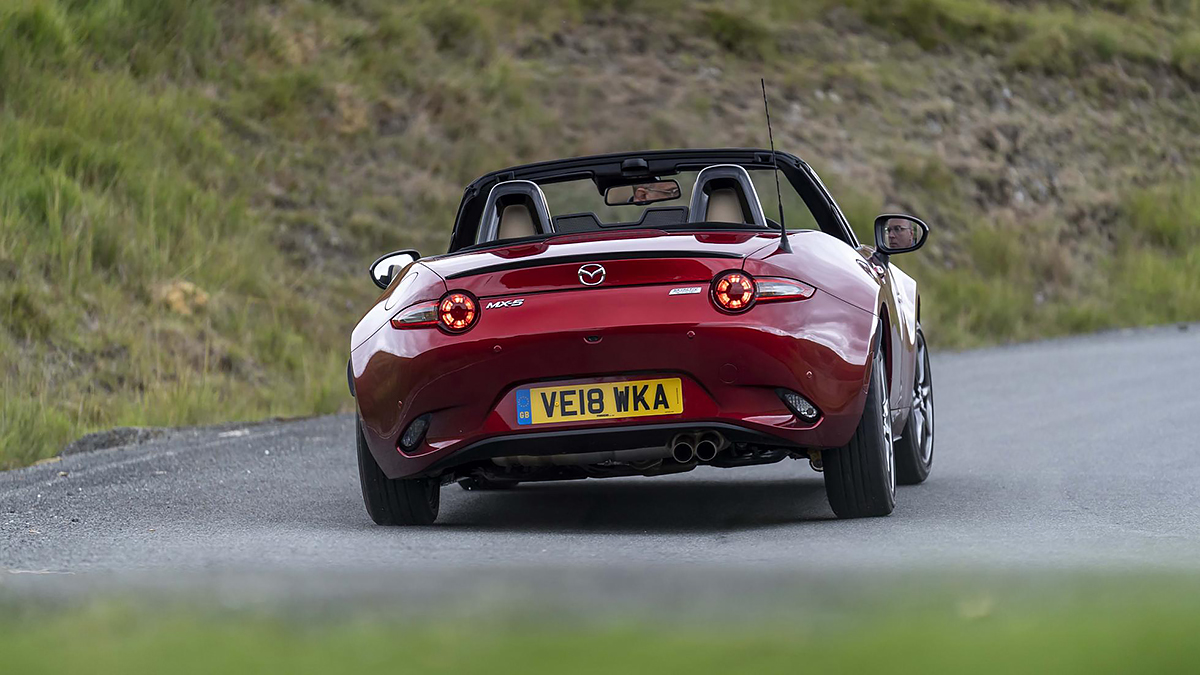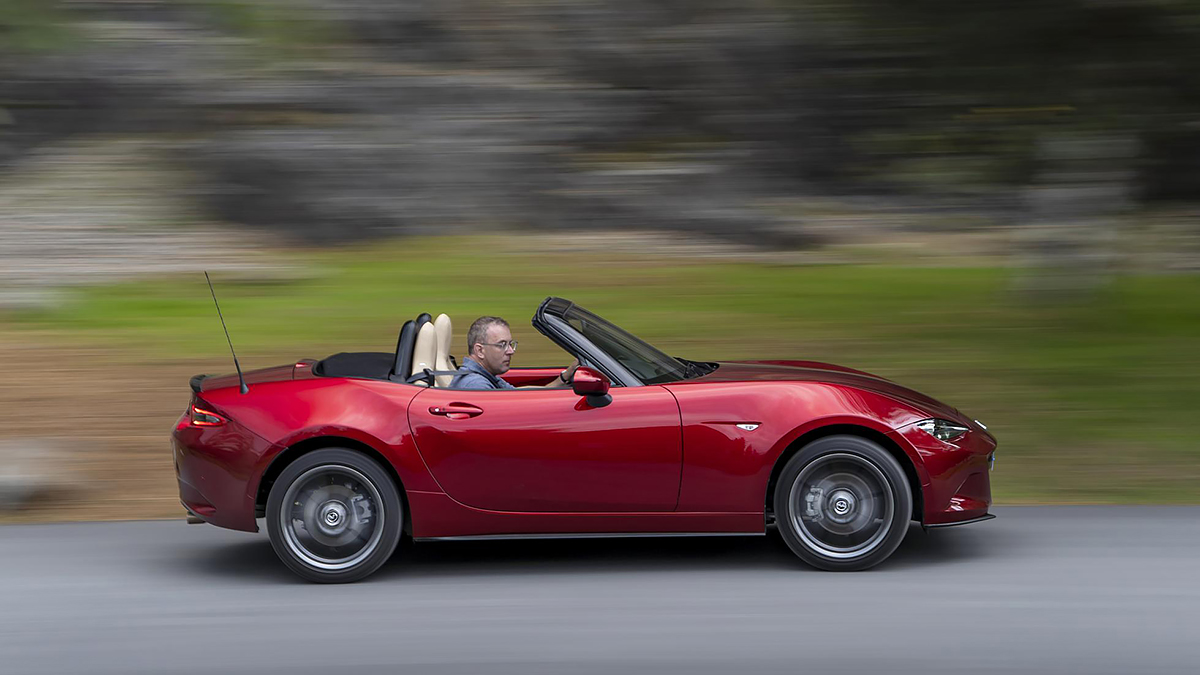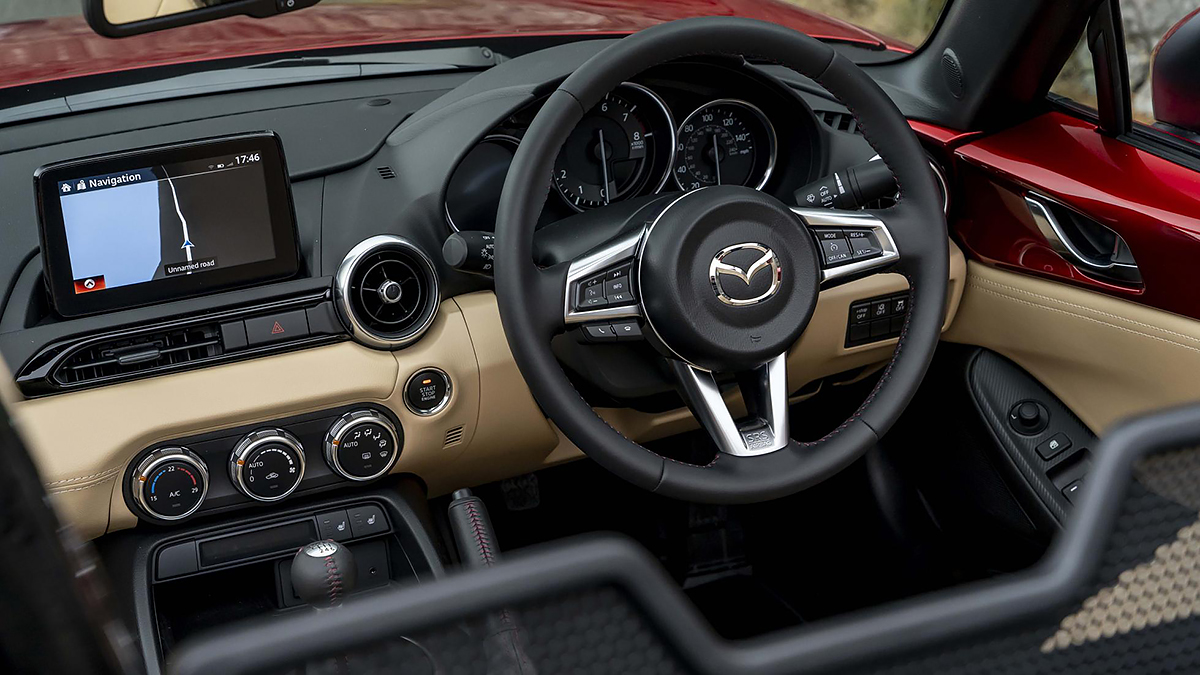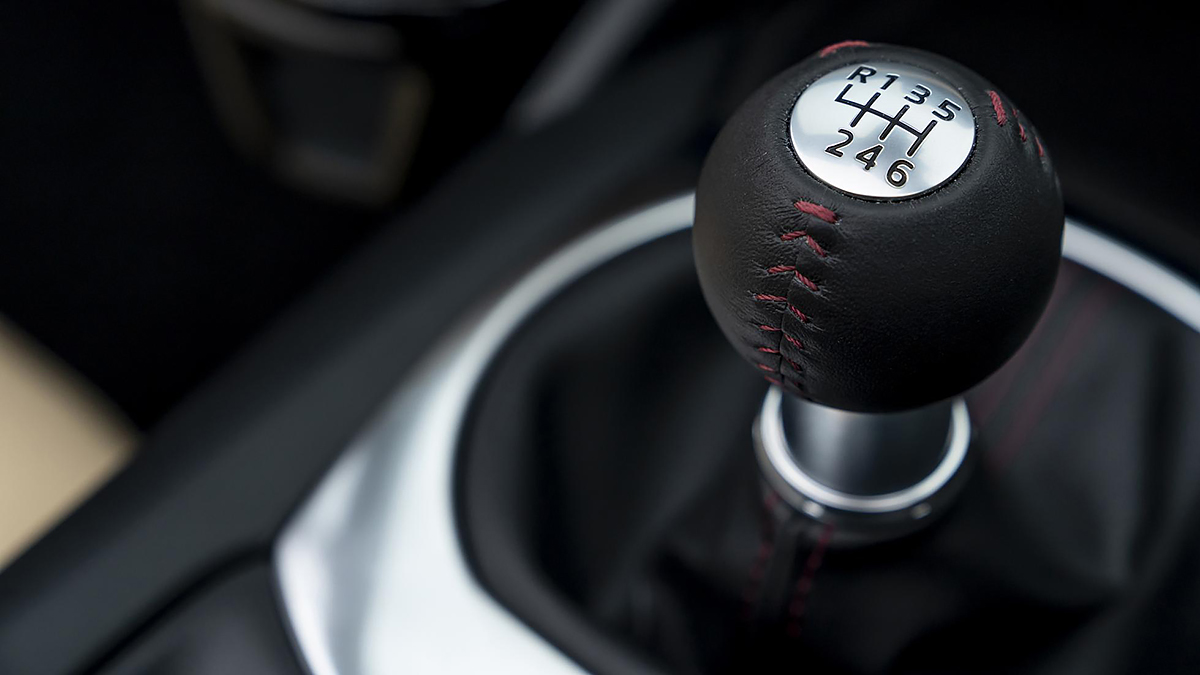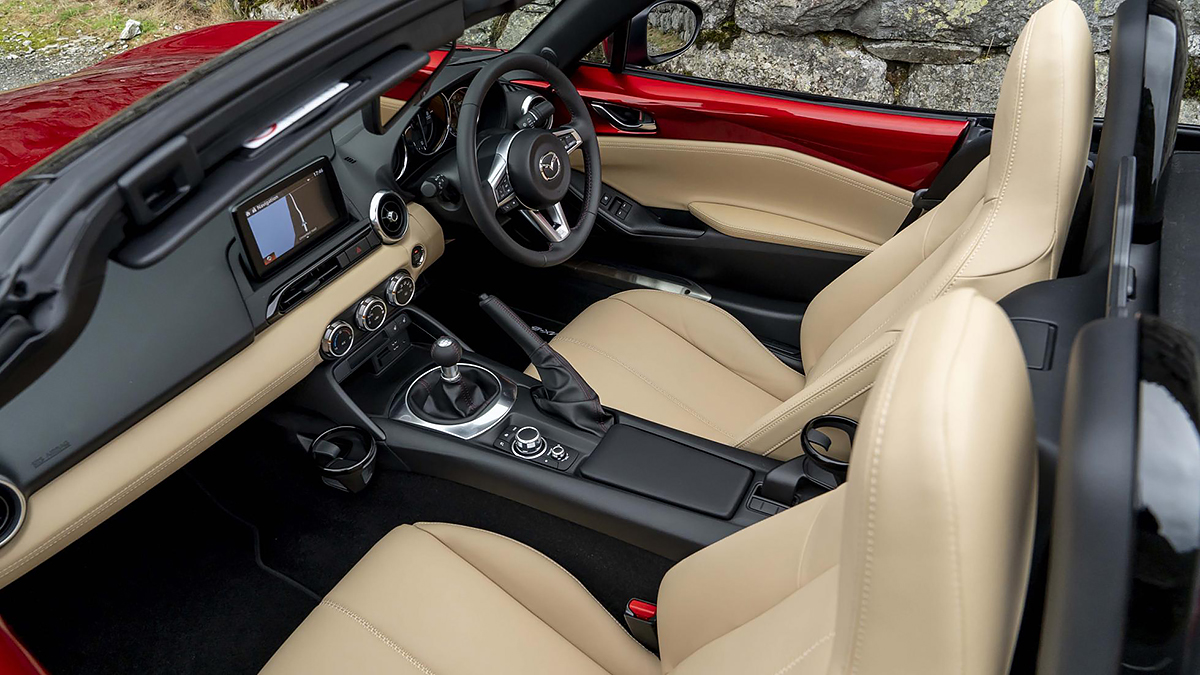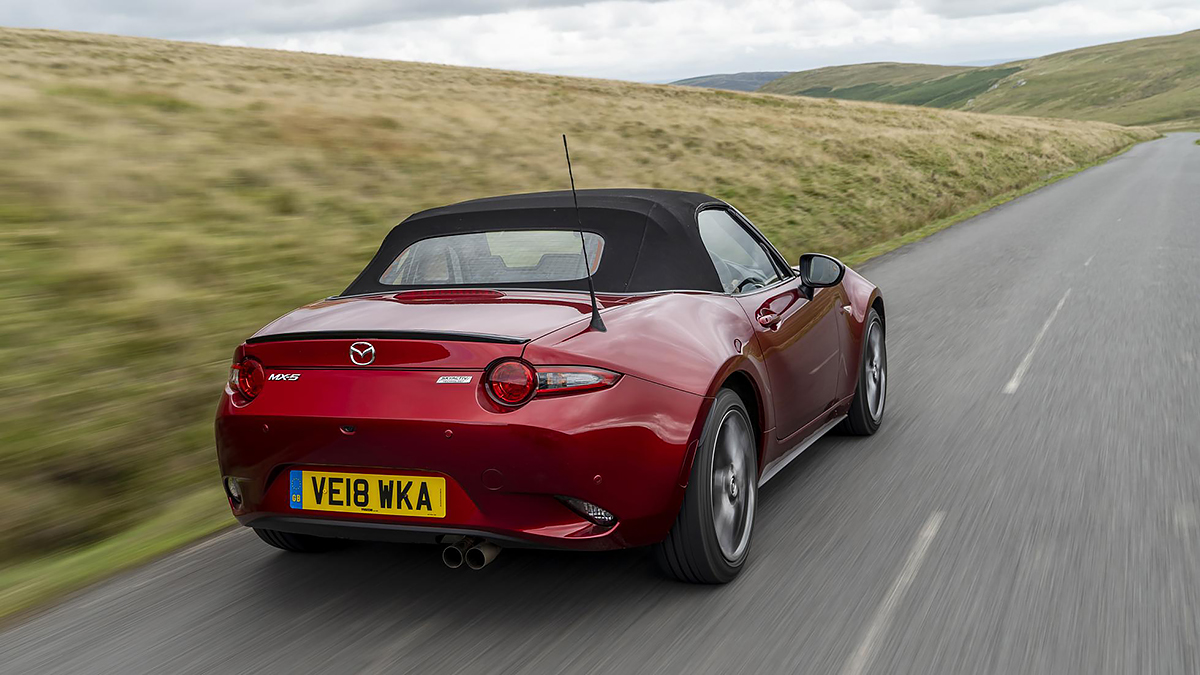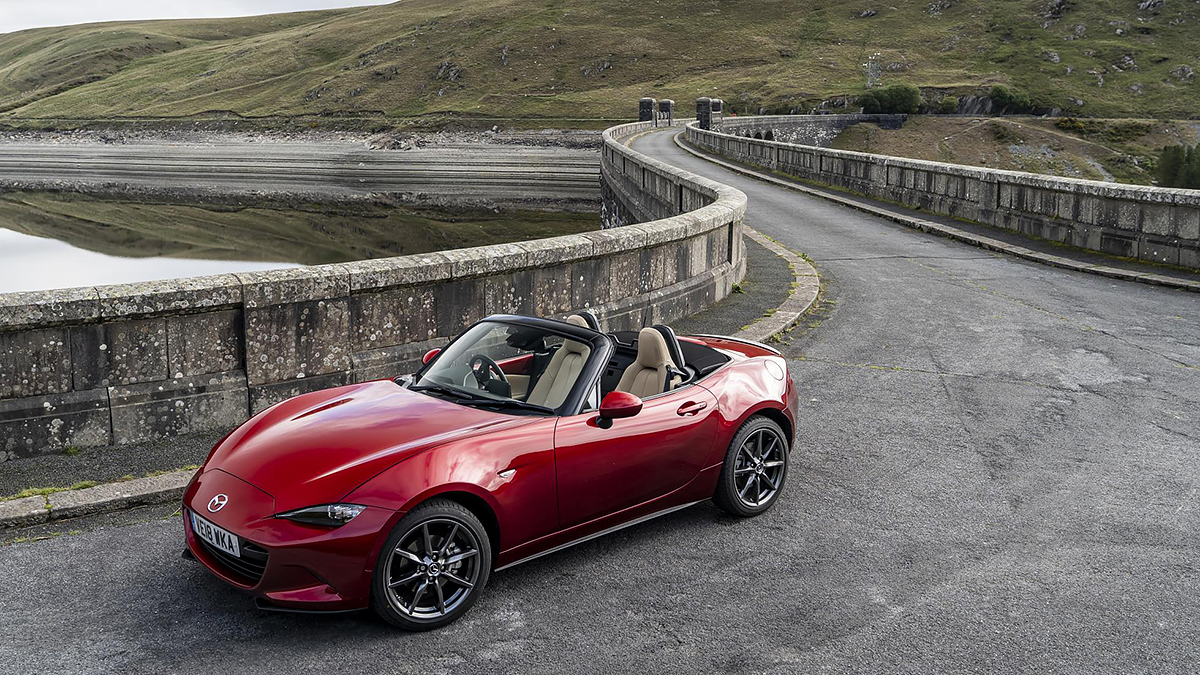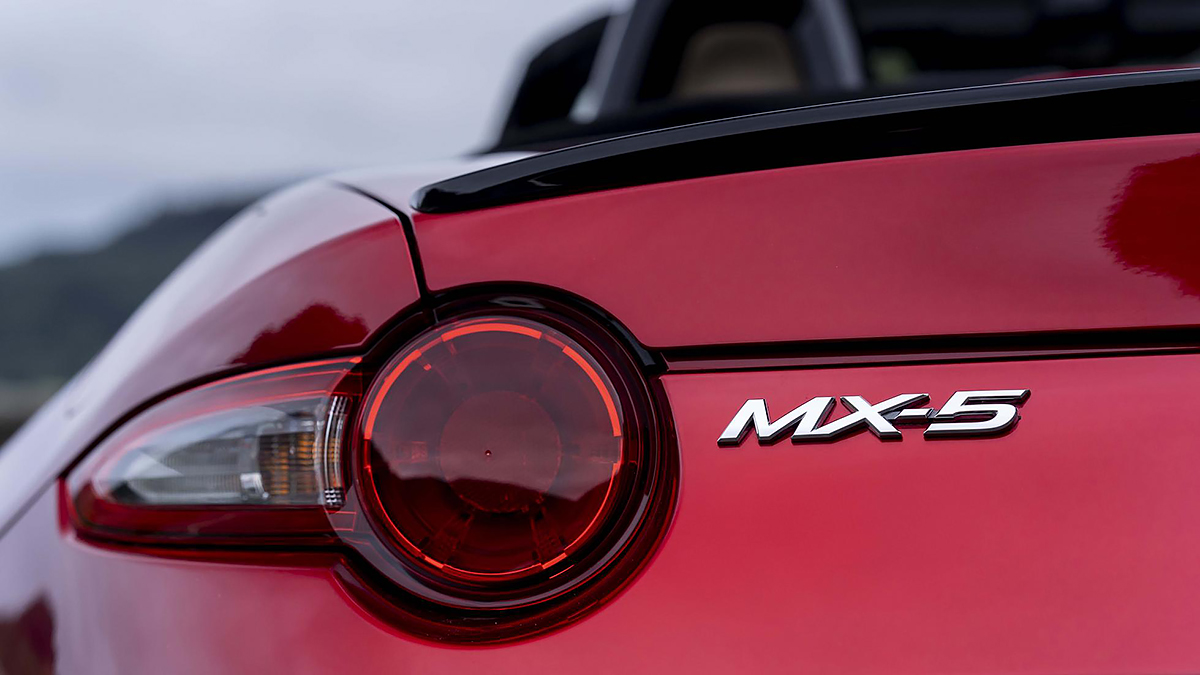Mazda MX-5 1.5 review: basic roadster’s UK test
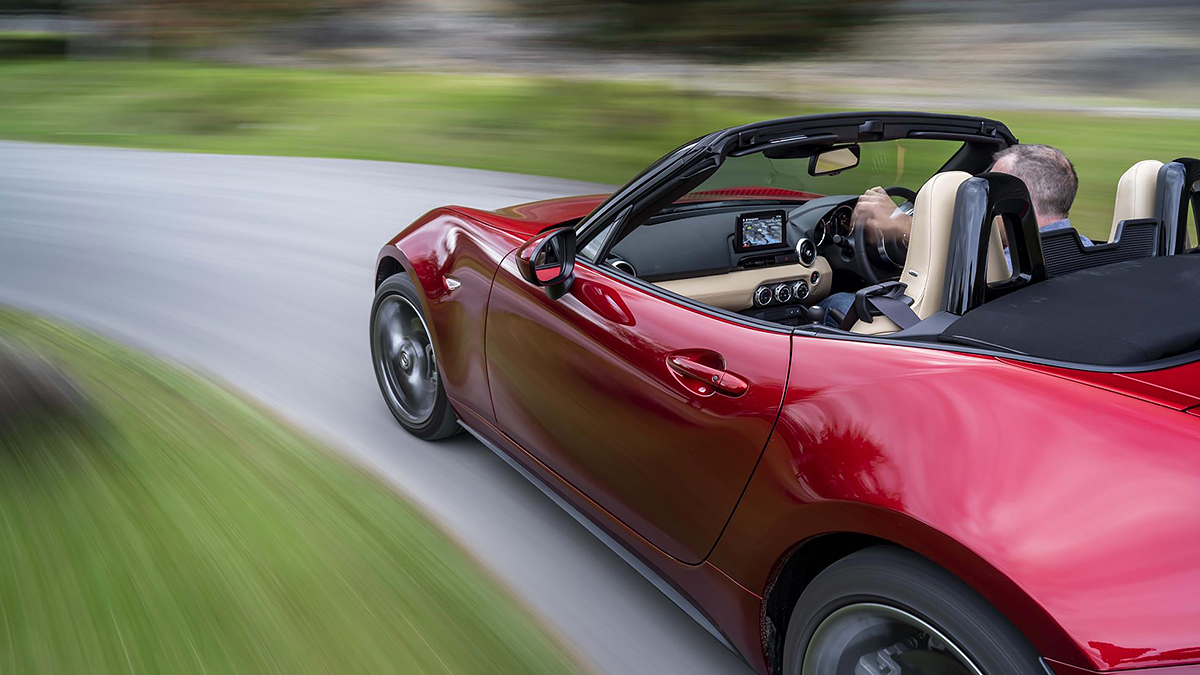
It’s not a new Mazda MX-5, nor a facelifted one, is it? What’s different?
One more brake horsepower. One. And two more foot-pounds of torque. Use new units and it sounds more impressive: three more metric horsepower to go with your two shiny, new Newtonmetres of twist.
Are you wasting my time?
Hopefully not. Don’t tap-swipe away just yet. If you appreciate the fantastical lengths that Japanese engineers journey to perfect their products, this humble MX5 is worth celebrating.
Go on.
To understand why this basic MX-5 is a bit special, we need to talk about the most expensive one. See, when Mazda introduced the folding-hard-top MX-5 RF in early 2017,it subtly firmed up the rear suspension to cope with the extra 45kg of rain-stopping origami. “Will you be adding that to the soft-top”, we enquired at the time, recalling the bouncy roadster’s habit of leaning onto its door handles in the corners and then springing back to attention on the straights.
“Nope”, said Mazda. Untruthfully, as it turns out. Mazda has quietly updated all MX-5s with ever-so-slightly less roly-poly suspension – which benefits the soft-top more than the RF more, for obvious reasons.
Meanwhile, Hiroshima’s engine team wasn’t so much subtly tweaking their end of the MX-5 as dismantling it with surgical attention to detail, and applying a high-end motorsport approach to bettering the powerplant. As you’ve heard from Top Gear’s first drive of the new MX-5 2.0-litre, the four-cylinder motor has benefitted from lighter pistons atop lighter conrods.
Camshafts and exhaust fuel injectors, throttle and exhaust valves – all of them have been redesigned, honed, and chiefly, lightened. This is engine tuning from the old-school – desperately optimising each whirring, reciprocating component instead of just winding up turbo boost and re-hacking the ECU.
So, the stubbornly normally aspirated MX-5 2.0-litre’s enjoyed a 23bhp power boost, lost a bit of weight, and gained a keener throttle response.
Good for the 2.0-litre. How exactly does this help the cheaper 1.5, though?
Because fantastically, bizarrely, sensationally – Mazda’s applied the same toothcomb-and-hone treatment to the 500cc smaller engine. An engine which, unlike the 2.0-litre, already revved to 7,500rpm. Now, it complies to WLTP testing regs, offers a claimed 47.1mpg (6L/100km) and 139g/km, and returned close to forty real-world mpg.
It’s got less friction, more zing to the power delivery, and yep, just one more horsepower for its troubles. That’s the sort of bloody-minded Japanese pursuit of excellence that gets you the Lexus LFA and bullet trains.
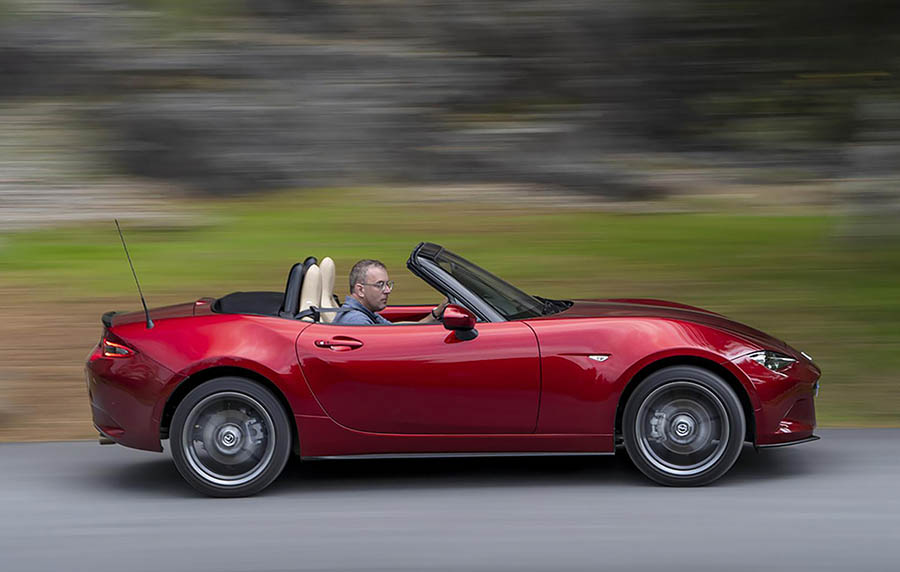
Still sounds like I’d prefer the bigger engine.
Fair point – and with carrots like a limited-slip diff, front strut brace and optional Bilstein dampers to supplement the extra poke, we wouldn’t blame you – but we’ll address that when Top Gear tries the heartier model in the UK later this month.
Time being, the 1.5-litre is what we’ve driven, in its second-most basic trim. The not-very-basic-sounding ‘SEL Nav+’ costs £20,795 (RM114,000), rolls on adorable 16-inch alloys and doesn’t want for much kit. You score ferociously heated seats, automatic climate control with a knuckle-singeing heater, cruise control (none of which feature on the lowliest SE+ trim), and a 7-inch touchscreen with digital radio and Bluetooth but no smartphone mirroring.
Okay, so you have to switch on your own headlights when it gets dark, turn on your wipers yourself when it rains, and judging a reverse park means turning your head around instead of depending on fevered beeping and a camera. You’ll manage. With the MX-5, there’s always an up-side to being basic. Here, it’s a decently equipped, revvy roadster that only weighs a touch over 1,060kg.
A less-is-more spec to match the powertrain, then?
If you like. This is a very sweetly balanced car, and not just in the chassis department. The relationship between grip, power, and ride control is beautifully judged – there’s just enough of both. You won’t unstick the rear under power. It’s still got seismic roll for such a titchy, lightweight car, but you quickly learn that roll is good for judging grip. There’s some flex in the structure, which kind of adds to the whole classic sports car underdog vibe.
The engine’s an eager delight, rasping with purpose to 6,000rpm then really getting its skates on for the last charge beyond 7,000rpm, with a harder edged timbre to match. As always, the gearshift is a slick, magnetic-feeling peach of an action. Hmm. Can you have a magnetic peach?
Third and fourth are a bit lengthy for the 1.5-litre’s muscle mass, and a vivid charge though the gears does feel like it’s buffering on dodgy internet at this point. All the more reason to cling onto second as long as you have the mechanical sympathy to dare.
Still a Top Gear hero then, the MX-5?
Definitely. It’s a very complete little car for around £280 a month. Peerlessly simple soft-top, solidly built, and feverish to drive. Oh, the 2.0-litre’s only an extra twenty quid a month. But the MX-5’s a car that’s never been solely about the numbers.
8/10
